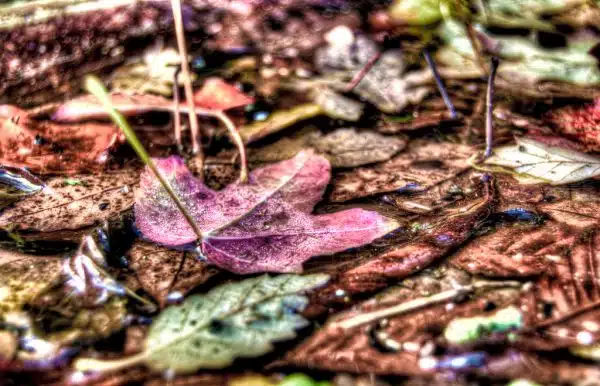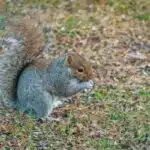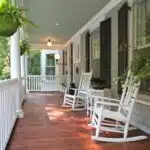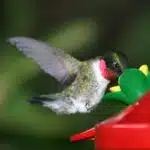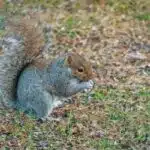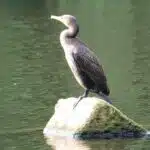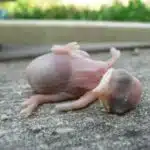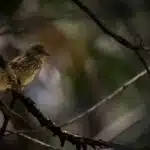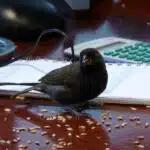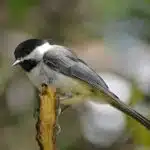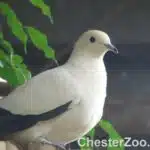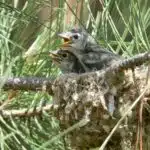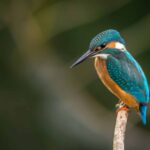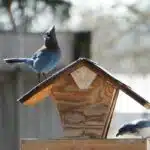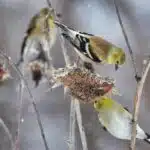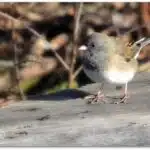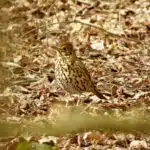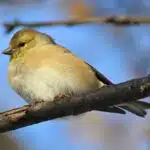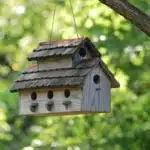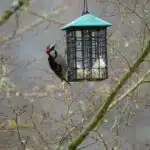Bird baths are a beautiful addition to any garden or outdoor space. They provide a source of water for birds, which can help attract more wildlife to your yard and promote biodiversity. However, bird baths also pose several threats and dangers that many people may not be aware of.
As a bird bath safety expert, it is important to raise awareness about the potential hazards associated with these fixtures. From the spread of disease among bird populations to the risk of drowning for small animals, there are several risks that must be considered when installing and maintaining a bird bath. By understanding these threats and taking appropriate precautions, we can ensure that our feathered friends remain safe while enjoying the benefits of this popular garden feature.
The Spread Of Avian Diseases
Preventing transmission of avian diseases is crucial to maintaining a healthy bird population, and bird baths can pose a risk in this regard. While bird baths are an excellent source of hydration for birds, they can also serve as vectors for disease transmission. Avian health management experts recommend taking certain precautions to prevent the spread of diseases among birds.
One way to prevent the spread of diseases through bird baths is by keeping them clean and disinfected regularly. This involves scrubbing the surface with soap and water and then disinfecting it with a solution of bleach and water. Experts recommend that bird bath owners should do this at least once a week or more frequently if multiple birds use the bath.
Another way to promote avian health management is by placing multiple small bird baths instead of one large one. This reduces the concentration of pathogens in any given bath, reducing the likelihood that birds will be exposed to infectious agents. Additionally, placing bird feeders away from bird baths can help reduce crowding around the water source, which can lead to disease transmission between birds.
Bird baths may attract more than just birds; they can also be attractive to predators such as cats and hawks. In order to minimize predation risks, it’s important to take steps to deter these animals from approaching your yard or garden area where your bird bath is located.
Attraction Of Predators
In the previous section, we explored the potential spread of avian diseases through bird baths. It is important to note that bird baths not only pose a risk to birds but also to other small animals that may come into contact with contaminated water. However, there are other threats associated with bird baths that require attention.
Attracting predators is one such threat. Bird baths can be an attractive source of food and water for predators such as cats, raccoons, or even larger birds like hawks. This can create a dangerous situation for birds and other small animals that frequent the area. Therefore, it is crucial to take measures to prevent predators from accessing the bird bath.
To ensure bird bath safety, there are several measures that can be taken. One option is to move the bird bath away from any areas where predators may have easy access. Additionally, installing a protective cover around the bird bath or placing it on top of a pedestal or stand can prevent easy access for predators. Regular cleaning and maintenance of the bird bath also play an essential role in preventing disease transmission and attracting unwanted visitors.
While attracting predators is undoubtedly a concern when it comes to bird bath safety, there are additional risks associated with these features as well. In the subsequent section, we will explore another significant danger: the risk of drowning for small animals who may accidentally fall into the water while trying to drink or bathe.
Risk Of Drowning For Small Animals
Preventing drowning of small animals in bird baths is a crucial aspect of bird bath safety. Small animals such as birds, squirrels, and chipmunks may accidentally fall into the water and drown due to their inability to escape. The risk of drowning can be mitigated by taking specific measures that ensure the safety of these small animals.
One effective way of preventing drowning is by supervising the use of bird baths. In situations where small animals are around, it is essential to keep an eye on them and ensure they do not fall into the water. It’s also paramount to monitor the depth of the water in the bird bath. If it’s too deep, consider filling it with shallower water or placing a stone or pebble for small animals to use as a stepping platform.
Importance of supervision cannot be overstated when dealing with bird bath safety. Animals are unpredictable and may end up causing harm or injury without proper attention. Supervision ensures that any potential danger is identified early enough before it causes any harm. By being vigilant, you can prevent accidents from happening and ensure that your backyard remains a safe haven for all creatures.
In conclusion, preventing drowning in small animals should always be at the forefront when considering bird bath safety measures. Supervising their usage and ensuring that there are no sharp edges or slippery surfaces are just some of the ways to mitigate this risk effectively. In the next section, we will focus on another critical aspect of bird bath safety- contamination from chemicals or cleaning agents- and what you can do about it.
Contamination From Chemicals Or Cleaning Agents
Contamination from chemicals or cleaning agents is a significant concern for bird bath safety. While some chemicals may not be harmful to birds, others can cause serious health problems if ingested or inhaled. Cleaning agents containing bleach, ammonia, or other harsh chemicals should never be used to clean bird baths as they can harm birds and destroy any natural filtration methods present.
To avoid contamination from chemicals, it is best to use chemical-free alternatives when cleaning a bird bath. One option is to use white vinegar mixed with water to clean the bath thoroughly. This mixture is effective in removing dirt and grime without harming birds or destroying any natural filtration methods that may be present. Another option is to use specially formulated bird bath cleaners that are safe for birds and the environment.
Natural filtration methods are essential for maintaining a healthy bird bath ecosystem and reducing the risk of contamination from chemicals. These methods include using plants such as water lilies and duckweed that naturally filter the water by absorbing nutrients and organic matter. In addition, adding rocks or gravel to the bottom of the basin can help reduce algae growth by increasing oxygen levels in the water. By utilizing natural filtration methods, you can maintain a healthy bird bath ecosystem without relying on harmful chemicals or cleaning agents.
Moving on from this section about contamination from chemicals or cleaning agents, it’s worth noting that another significant threat to bird bath safety is overcrowding and competition among birds. As more birds visit your bird bath, there is an increased risk of disease transmission and aggression among different species competing for access to water. To prevent this issue, it’s important to take certain steps when setting up your bird bath and monitoring its use over time.
Risk Of Overcrowding And Competition
Competition dynamics among birds can be a challenge in shared bird baths. Some species are known to be more aggressive and territorial, while others are more passive. This can lead to overcrowding and competition for access to the water source. Observations have shown that dominant birds may prevent weaker birds from accessing the bird bath, which can result in dehydration and potential health problems.
In addition to aggression, competition can also arise from differences in feeding habits. Birds that primarily feed on insects or nectar may require more frequent visits to the bird bath than those that consume seeds or fruit. This can exacerbate the competition for limited resources and lead to further overcrowding.
Behavioral observations of birds at bird baths have also revealed that some species prefer certain types of water sources or locations over others. Factors such as depth of water, location of the bath, and presence of other animals or humans nearby can all influence which birds choose to use a particular bird bath. Understanding these preferences can help bird enthusiasts make informed decisions about placement and design of their bird baths.
As we have seen, competition dynamics play a significant role in the risk associated with overcrowding at bird baths. While providing a water source is important for the health and wellbeing of local bird populations, it is equally important to consider factors such as aggression, feeding habits, and behavioral preferences when designing and placing bird baths. In the next section, we will explore another important aspect of bird bath safety: potential for algae growth.
Potential For Algae Growth
With the potential risks of overcrowding and competition in mind, it is important to consider other threats that bird baths may pose. Algae growth is a common problem in bird baths, which can be unsightly and even dangerous for birds. Algae blooms can quickly consume large amounts of oxygen in the water, leading to hypoxia and potentially fatal consequences for birds.
Preventing algae growth is crucial for maintaining a safe and healthy environment for birds. One effective method is to regularly clean the bird bath, removing any debris or organic matter that may contribute to algae growth. Additionally, reducing the amount of sunlight that reaches the water can help prevent algae from thriving. Installing a shade cover or placing the bird bath in a shaded area can help achieve this goal.
Algae control measures such as adding algaecides or using UV sterilizers may also be necessary in some cases. However, it is important to use these methods with caution as they can have negative impacts on both birds and other wildlife. Careful consideration should be taken before implementing any chemical treatments or devices into the bird bath ecosystem. By taking proactive steps to prevent algae growth and carefully managing any necessary control measures, we can ensure that our feathered friends have access to clean and safe water sources to drink from and bathe in.
As we continue exploring potential threats posed by bird baths, inadequate water depth stands out as another significant safety concern. While shallow water may seem like a good idea for small birds, it actually increases their risk of drowning if they accidentally fall in. Inadequate depth also makes it difficult for larger birds to fully immerse themselves in the water, which limits their ability to effectively clean their feathers. Therefore, providing an adequate depth of at least two inches throughout the entire bird bath is essential for ensuring that all types of birds are able to safely enjoy this valuable resource.
Inadequate Water Depth
Shallow water can pose a risk to birds as they may become trapped if the water is too shallow. Mosquito breeding is another risk associated with shallow water as stagnant water provides an ideal environment for larvae to develop. To minimize these risks, bird baths should have a minimum water depth of 2 inches as this will reduce the chances of birds becoming trapped and make it difficult for mosquito larvae to survive. Bird owners should clean and refresh the water regularly to reduce the chances of mosquito breeding.
Shallow Water Risk
Bird baths are essential in attracting and providing a safe haven for our feathered friends. However, some threats and dangers come with these structures, particularly when it comes to inadequate water depth. One of the most significant concerns is the shallow water risk. As a bird bath safety expert, I cannot stress enough the importance of maintaining safe water depth levels to ensure birds’ safety.
A shallow bird bath can pose a risk to birds as they might lose their balance or get stuck in the shallow waters. It’s vital to maintain an appropriate water depth that is safe for birds of all sizes and species. Ideally, the water level should be at least two inches deep at its shallowest point and no more than three inches at its deepest point. This way, birds can comfortably bathe without risking their safety.
When it comes to ensuring a bird bath’s safety, you must also consider using safe materials for construction. Some materials such as concrete or glazed ceramic may contain chemicals that could leach into the water and harm birds over time. Therefore, it’s best to opt for safer alternatives such as natural stone or unglazed terracotta that do not contain harmful chemicals but still provide a sturdy foundation for the structure.
In conclusion, maintaining proper water depth levels is essential in keeping our feathered friends safe while enjoying their bird baths’ benefits. It’s crucial to use safe materials for construction to avoid any long-term risks associated with chemical exposure from materials used in constructing the bird bath structure. By following these tips and precautions, we can ensure that our avian friends have a comfortable and safe place to bathe and drink water.
Mosquito Breeding Risk
As a bird bath safety expert, it’s crucial to discuss the risks associated with inadequate water depth and how they can affect not only birds but also humans. One of the major concerns is the breeding of mosquitoes in shallow bird baths that can pose serious health risks. Mosquitoes need stagnant water to breed, and bird baths that are not deep enough can provide them with an ideal breeding ground.
Preventing mosquitoes from breeding in bird baths is essential in keeping both birds and humans safe from potential health risks. The easiest way to do this is by maintaining appropriate water depth levels between two and three inches. This ensures that the water remains circulating, making it more difficult for mosquitoes to lay their eggs on its surface.
It’s also important to regularly clean and change the water in bird baths, especially during warmer months when mosquito activity increases. By taking these precautions, we can prevent mosquito breeding in bird baths and ensure a safe environment for both birds and humans.
Risk Of Freezing In Cold Weather
Preventing freezing in bird baths during cold weather is crucial to maintaining a safe environment for birds. When water freezes, it can cause birds to become trapped or stuck, putting their lives at risk. To prevent freezing, it is important to choose the right location for your bird bath. Avoid placing it in shaded areas where the sun cannot reach and keep it away from areas where cold wind blows.
Another way to prevent freezing is to invest in a bird bath heater. These heaters are designed specifically for bird baths and will keep the water temperature above freezing point even on the coldest of days. Be sure to follow manufacturer instructions when installing your heater, as improper installation can be dangerous and may cause damage to your bird bath.
Winter care for your bird bath also involves regular monitoring of water levels. If you notice that the water level is decreasing rapidly, it could be an indication that there is a leak somewhere in the system. Addressing leaks promptly will help prevent further problems like structural damage or electrical problems caused by water seepage.
Moving onto maintenance and cleaning procedures, it is important to wash your bird bath regularly with warm soapy water and rinse thoroughly before refilling with fresh water. This prevents bacteria growth and ensures that birds have access to clean water at all times. By following these simple steps for winter care and maintenance procedures, you can ensure that your feathered friends have a safe haven during the colder months.
Maintenance And Cleaning Procedures
Although freezing is a major concern when it comes to bird baths, there are other risks and dangers that should be taken into account. Bird baths can attract unwanted attention from predators such as cats, raccoons, and snakes. These animals can pose a threat to the birds drinking or bathing in the bird bath. Additionally, stagnant water in bird baths can become a breeding ground for mosquitoes which can transmit diseases such as West Nile virus.
To mitigate these risks, it is important to maintain and clean your bird bath on a regular basis. There are DIY solutions available for cleaning the bird bath, such as using vinegar or bleach diluted in water to sanitize it. However, if you’re unsure about how to properly clean your bird bath, it’s best to consult with a professional cleaning service. They have the knowledge and experience needed to ensure that your bird bath is cleaned thoroughly while also minimizing any potential harm to both the birds and environment.
By taking these precautions and maintaining your bird bath regularly, you can provide a safe place for birds to drink and bathe. However, it’s also important to choose a safe location for your bird bath. This will help prevent predation while allowing easy access for birds. In the next section we will discuss some tips for choosing an optimal location for your bird bath.
Choosing A Safe Location For Your Bird Bath
Where you place your bird bath is just as important as the type of bath you choose. A poor location can lead to harm for both birds and humans. For example, placing a bird bath too close to windows can cause injury or death to birds that accidentally fly into them. Additionally, if a bird bath is placed in an area with heavy foot traffic, its water may become contaminated with harmful chemicals such as pesticides and fertilizers.
Installation tips are essential for ensuring the safety of your bird bath. Make sure that it is on level ground to avoid tipping over, which can injure or drown birds. To minimize contamination risks, install it in an area where there is little to no runoff from rainwater or sprinklers. To further prevent contamination, consider using a filter or adding fresh water frequently.
Decorative designs can add aesthetic appeal to your garden but be mindful of their potential dangers. For instance, intricate designs may have hard-to-reach crevices that are difficult to clean and harbor disease-causing bacteria. Similarly, some designs may include sharp edges that pose safety hazards for birds flying in and out of the basin.
Providing multiple water sources is an additional way you can help keep your feathered friends safe while enjoying their visits. Birds appreciate having choices when it comes to drinking and bathing options; it also helps to reduce overcrowding at one particular location. By following these installation tips and design considerations, you can create a safe environment for birds while enjoying the beauty they bring to your garden.
Providing Multiple Water Sources
Water quality is a crucial aspect to consider when providing multiple water sources for birds. Always make sure that the water is clean and free from harmful chemicals or pollutants. A regular cleaning schedule must also be implemented to ensure that the bird baths are properly maintained and prevent the growth of harmful bacteria, which can cause infections and diseases among birds.
Bird behavior should also be taken into account when providing multiple water sources. Different bird species have varying preferences when it comes to their drinking habits. Some prefer shallow water sources while others opt for deeper ones. It is important to observe the birds’ behavior around the water sources to determine their preferences. Providing a variety of options will give them a choice and increase their chances of finding the perfect spot that suits their needs.
In summary, providing multiple water sources for birds is an effective way to ensure their hydration and well-being. However, it is essential to prioritize the quality of the water and take into consideration bird behavior to maximize its benefits. With these guidelines in mind, you can create a safe and inviting environment for your feathered friends to enjoy!
Ensuring proper hygiene measures in maintaining bird baths is just one step towards preventing illnesses or infections among birds. In addition, monitoring for signs of illness or infection should also be done regularly as a precautionary measure. By doing so, we can take immediate action if any abnormality is detected in our feathered friends’ health, ensuring that they receive prompt medical attention if necessary.
Monitoring For Signs Of Illness Or Infection
As a bird bath safety expert, it is important to recognize the potential threats and dangers that come with owning a bird bath. While prevention measures such as regular cleaning and disinfecting can reduce the risk of infection, it is important to also monitor for signs of illness or infection in birds. Early detection techniques can greatly increase the chances of successful treatment and prevent further spread of disease.
One key indicator of illness in birds is a change in behavior. Birds that appear lethargic, fluffed up, or are not eating may be showing signs of sickness. Additionally, changes in feather quality or color can also indicate an underlying health issue. It is important to observe birds closely and contact a veterinarian if any concerning symptoms arise.
In addition to monitoring for signs of illness or infection, bird owners should also educate themselves on proper hygiene practices when handling their feathered friends. By taking proactive prevention measures and quickly identifying any signs of sickness, we can help keep our bird populations healthy and thriving for years to come.
Educating Others On Bird Bath Safety
- Bird baths provide a safe and attractive environment for birds, but they can also pose a risk of disease and injury.
- To prevent the spread of disease, bird baths should be cleaned regularly and kept away from areas where wild animals congregate.
- To minimize the risk of injury, bird baths should be placed in areas where the risk of predators is low and other hazards are avoided.
- When choosing an appropriate location for a bird bath, it is important to consider the size of the area, the amount of shade, and the distance from other bird feeders.
- Bird baths should be placed in areas where the ground is level, there is good drainage, and the water is not too deep.
- Appropriate safety precautions should be taken when placing bird baths, such as avoiding areas where there is a risk of predators and providing protection from the elements.
Preventing Spread Of Disease
As a bird bath safety expert, it is critical to educate others on the potential threats and dangers of bird baths. One of the most significant risks is the spread of diseases among birds. Preventing cross contamination is essential in ensuring that our feathered friends stay healthy and happy.
To prevent the spread of disease, proper hygiene practices must be implemented. Birdbaths should be cleaned regularly with soap and water, followed by disinfection with a solution of one part bleach to nine parts water. This will kill any harmful bacteria or fungi that may be present. Additionally, it is essential to avoid overcrowding in bird baths as this increases the risk of disease transmission.
Educating others on preventing cross-contamination through proper hygiene practices can help ensure that bird baths remain safe for our avian friends. With regular cleaning and disinfection, we can help prevent the spread of diseases and keep birds healthy and thriving in their natural habitats. Remember, prevention is always better than cure when it comes to bird bath safety!
Minimizing Risk Of Injury
As a bird bath safety expert, it is crucial to educate others on the importance of minimizing the risk of injury in and around bird baths. One way to reduce the likelihood of harm is to use safe materials when constructing or purchasing bird baths. Avoiding sharp edges or hazardous materials will lessen the chance of injury caused by birds while bathing.
Proper filtration is also essential for minimizing injury risks. Bird baths should have adequate drainage systems that prevent stagnant water from accumulating and becoming a breeding ground for harmful bacteria and parasites. Regular maintenance of the filtration system will ensure that water remains clean and healthy for avian visitors. Monitoring water temperature is also critical as extremely hot or cold water can cause shock or injury to birds.
Educating others on minimizing risk factors through using safe materials, proper filtration, regular maintenance, and monitoring water temperature can help promote a safer environment for birds. By taking these safety measures, we can reduce the occurrence of injuries and create an environment where birds can safely enjoy their time bathing and drinking from bird baths. Remember, promoting safety in all aspects of bird bath care is vital for ensuring the wellbeing of our feathered friends.
Choosing Appropriate Locations
As a bird bath safety expert, educating others on the importance of choosing appropriate locations for bird baths is crucial. The placement of bird baths can significantly impact their safety and wellbeing. One factor to consider is privacy concerns, as birds may be hesitant to bathe or drink in areas where they feel exposed and vulnerable. Therefore, it is essential to select a location that offers sufficient cover from predators while still providing easy access for birds.
Another significant consideration when selecting a location for bird baths is the environmental impact. It is crucial to avoid placing bird baths in areas where runoff water can contaminate nearby bodies of water or natural habitats. Additionally, bird baths should not be placed in direct sunlight for extended periods as this can cause algae growth, which could harm birds.
Educating others on the importance of choosing appropriate locations for bird baths helps promote safety and wellbeing for avian visitors. By considering privacy concerns and environmental impact, we can create an environment that encourages birds to visit and enjoy their time bathing and drinking from bird baths. Remember always to evaluate potential locations carefully before installing a new bird bath to ensure its safety and minimize any negative impact on the environment.
Supporting Local Wildlife Conservation Efforts
As a bird bath safety expert, it is important to not only address the threats and dangers of bird baths but also to promote ways in which individuals can support local wildlife conservation efforts. Collaborating with local organizations is a great way to start. By working with these organizations, you can help create awareness about the importance of bird baths and how they contribute to local ecosystems. You can also learn more about the different types of birds that inhabit your area and what their specific needs are regarding water sources.
Another way to support local wildlife conservation efforts is through fundraising initiatives. These can take many forms, such as organizing bird watching tours or hosting charity events focused on raising funds for bird conservation programs. By participating in these initiatives, you not only help raise money for important causes but also encourage others to become more aware of the importance of protecting our feathered friends.
In conclusion, supporting local wildlife conservation efforts is a great way to make a positive impact on your community and the environment as a whole. Through collaboration with local organizations and participating in fundraising initiatives, you can help promote awareness about the importance of bird baths and contribute to ongoing bird conservation efforts. Next, we will discuss how you can enjoy your bird bath responsibly while still keeping our feathered friends safe from harm.
Enjoying Your Bird Bath Responsibly
As we have discussed in the previous section, supporting local wildlife conservation efforts is crucial for maintaining a healthy ecosystem. However, it is essential to be aware of the potential threats and dangers that bird baths can pose to our feathered friends. Imagine a beautiful oasis in the middle of a desert, providing much-needed relief and hydration to parched birds. Now picture that same oasis contaminated with harmful chemicals, or worse, serving as a death trap due to improper maintenance. This metaphor illustrates why it is essential to enjoy your bird bath responsibly.
Water conservation is an essential aspect of responsible bird bath ownership. Keeping your bird bath topped up throughout the day may seem like a kind gesture towards our avian friends, but it wastes precious water resources. Instead, consider investing in a bird bath that recycles water or use collected rainwater. Additionally, incorporating bird-friendly landscaping around your bird bath can help attract birds naturally while also reducing the amount of water needed for upkeep.
While owning a bird bath can be enjoyable and rewarding, it’s important to remember that it comes with responsibilities as well. As a safety expert on bird baths, I strongly advise against using any chemicals or detergents when cleaning your bird bath – these substances can harm birds and other wildlife species who frequent them. Maintaining proper hygiene by regularly changing and cleaning your birdbath is vital for keeping our feathered friends safe and healthy. Remember: enjoying your birdbath responsibly means protecting both wildlife and natural resources alike!
Conclusion
As a bird bath safety expert, it is crucial to understand the potential threats and dangers that come with owning a bird bath. The spread of avian diseases, attraction of predators, risk of drowning for small animals, contamination from chemicals or cleaning agents, and risk of overcrowding and competition are just a few examples of the many hazards associated with bird baths.
To ensure the safety of your feathered friends and other wildlife, it is important to monitor for signs of illness or infection regularly. Educating others on bird bath safety can also help reduce the number of incidents related to these threats. Supporting local wildlife conservation efforts can further protect birds and their habitats.
In conclusion, as we enjoy the beauty and wonder that bird baths bring into our lives, let us do so responsibly. Remembering the risks associated with them will help us take proactive measures in protecting not only our feathered friends but also other small animals that may visit. As an old adage states: “An ounce of prevention is worth a pound of cure.”
Image Credits
- “bird bath” by Jon Bunting (featured)

